A Photosynthesis Primer
Section Goals
By the end of this section, you will be able to do the following:
- Explain the significance of photosynthesis to other living organisms
- Describe the main structures involved in photosynthesis
- Identify the substrates and products of photosynthesis
- Explain how chloroplasts evolved via endosymbiosis
Photosynthesis is essential to all life on earth; both plants and animals depend on it. It is the only biological process that can capture the energy that originates from sunlight and convert it into chemical compounds (carbohydrates) that every organism uses to power its metabolism. It is also a source of oxygen necessary for many living organisms. In brief, the energy of sunlight is “captured” to energize electrons, whose energy is then stored in the covalent bonds of sugar molecules. How long-lasting and stable are those covalent bonds? The energy extracted today by the burning of coal and petroleum products represents the energy of sunlight captured and stored by photosynthesis 350 to 200 million years ago during the Carboniferous Period.
Plants, algae, and a group of bacteria called cyanobacteria are the only organisms capable of performing photosynthesis (Figure 1). Because they use light to manufacture their food, they are called photoautotrophs (literally, “self-feeders using light”). Other organisms, such as animals, fungi, and most other bacteria, are termed heterotrophs (“other feeders”)because they must rely on the sugars produced by photosynthetic organisms for their energy needs. A third very interesting group of bacteria synthesize sugars, not by using sunlight’s energy but by extracting energy from inorganic chemical compounds. For this reason, they are referred to as chemoautotrophs.
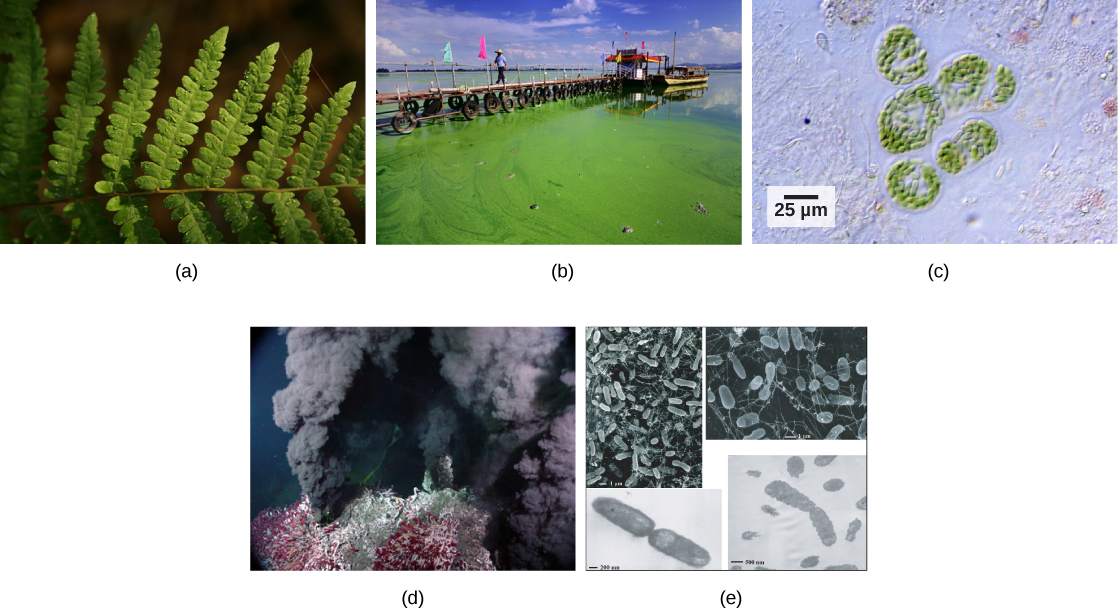
The importance of photosynthesis is not just that it can capture sunlight’s energy. After all, a lizard sunning itself on a cold day can use the sun’s energy to warm up in a process called behavioral thermoregulation. In contrast, photosynthesis is vital because it evolved as a way to store the energy from solar radiation (the “photo-” part) to energy in the carbon-carbon bonds of carbohydrate molecules (the “-synthesis” part). Those carbohydrates are the energy source that heterotrophs use to power the synthesis of ATP via respiration. Therefore, photosynthesis powers 99 percent of Earth’s ecosystems. When a top predator, such as a wolf, preys on a deer (Figure 2), the wolf is at the end of an energy path that went from nuclear reactions on the surface of the sun, to visible light, to photosynthesis, to vegetation, to deer, and finally to the wolf.
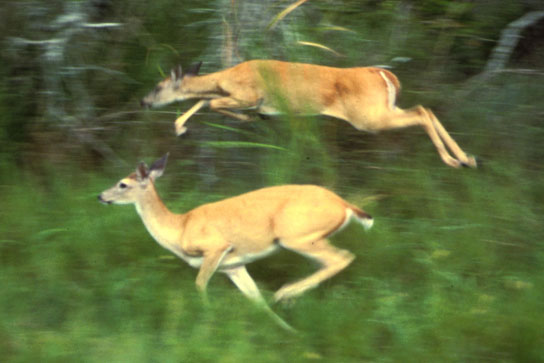
Main Structures and Summary of Photosynthesis
Photosynthesis is a multi-step process that requires specific wavelengths of visible sunlight, carbon dioxide (which is low in energy), and water as substrates (Figure 3). After the process is complete, it releases oxygen and produces glyceraldehyde-3-phosphate (G3P), as well as simple carbohydrate molecules (high in energy) that can then be converted into glucose, sucrose, or any of dozens of other sugar molecules. These sugar molecules contain energy and the energized carbon that all living things need to survive.
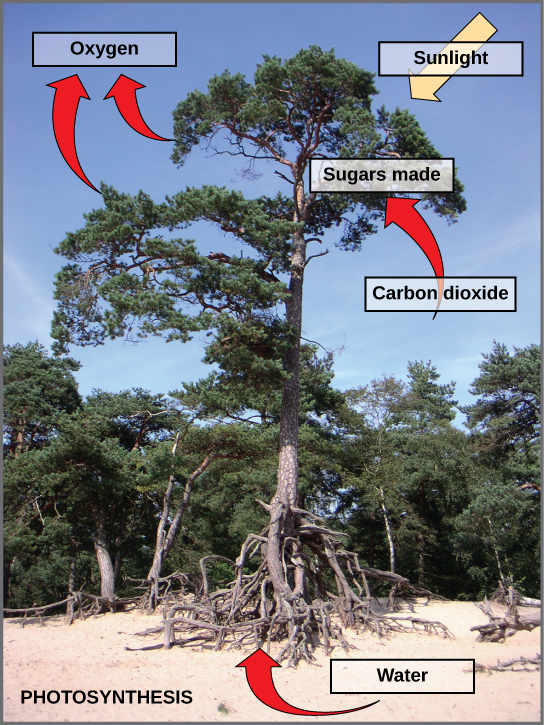
The following is the chemical equation for photosynthesis (Figure 4):

Although the equation looks simple, the many steps that take place during photosynthesis are actually quite complex. Before learning the details of how photoautotrophs turn sunlight into food, it is important to become familiar with the structures involved.
Basic Photosynthetic Structures
In plants, photosynthesis generally takes place in leaves, which consist of several layers of cells. The process of photosynthesis occurs in a middle layer called the mesophyll. The gas exchange of carbon dioxide and oxygen occurs through small, regulated openings called stomata (singular: stoma), which also play roles in the regulation of gas exchange and water balance. The stomata are typically located on the underside of the leaf, which helps to minimize water loss due to high temperatures on the upper surface of the leaf. Each stoma is flanked by guard cells that regulate the opening and closing of the stomata by swelling or shrinking in response to osmotic changes.
In all autotrophic eukaryotes, photosynthesis takes place inside an organelle called a chloroplast (Figure 5). For plants, chloroplast-containing cells exist mostly in the mesophyll. Chloroplasts have a double membrane envelope (composed of an outer membrane and an inner membrane), and are ancestrally derived from ancient free-living cyanobacteria. Within the chloroplast are stacked, disc-shaped structures called thylakoids. Embedded in the thylakoid membrane is chlorophyll, a pigment (molecule that absorbs light) responsible for the initial interaction between light and plant material, and numerous proteins that make up the electron transport chain. The thylakoid membrane encloses an internal space called the thylakoid lumen. A stack of thylakoids is called a granum, and the liquid-filled space surrounding the granum is called stroma or “bed” (not to be confused with stoma or “mouth,” an opening on the leaf epidermis).
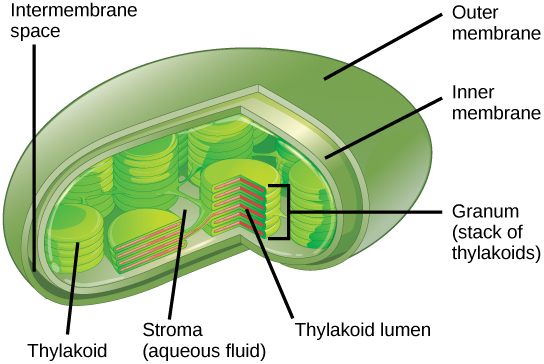
Did I Get It?
The Two Parts of Photosynthesis
Photosynthesis takes place in two sequential stages: the light-dependent reactions and the light-independent reactions. In the light-dependent reactions, energy from sunlight is absorbed by chlorophyll and that energy is converted into stored chemical energy. In the light-independent reactions, the chemical energy harvested during the light-dependent reactions drives the assembly of sugar molecules from carbon dioxide. Therefore, although the light-independent reactions do not use light as a reactant, they require the products of the light-dependent reactions to function. In addition, however, several enzymes of the light-independent reactions are activated by light. The light-dependent reactions utilize certain molecules to temporarily store the energy: These are referred to as energy carriers. The energy carriers that move energy from light-dependent reactions to light-independent reactions can be thought of as “full” because they are rich in energy. After the energy is released, the “empty” energy carriers return to the light-dependent reaction to obtain more energy. Figure 6 illustrates the components inside the chloroplast where the light-dependent and light-independent reactions take place.
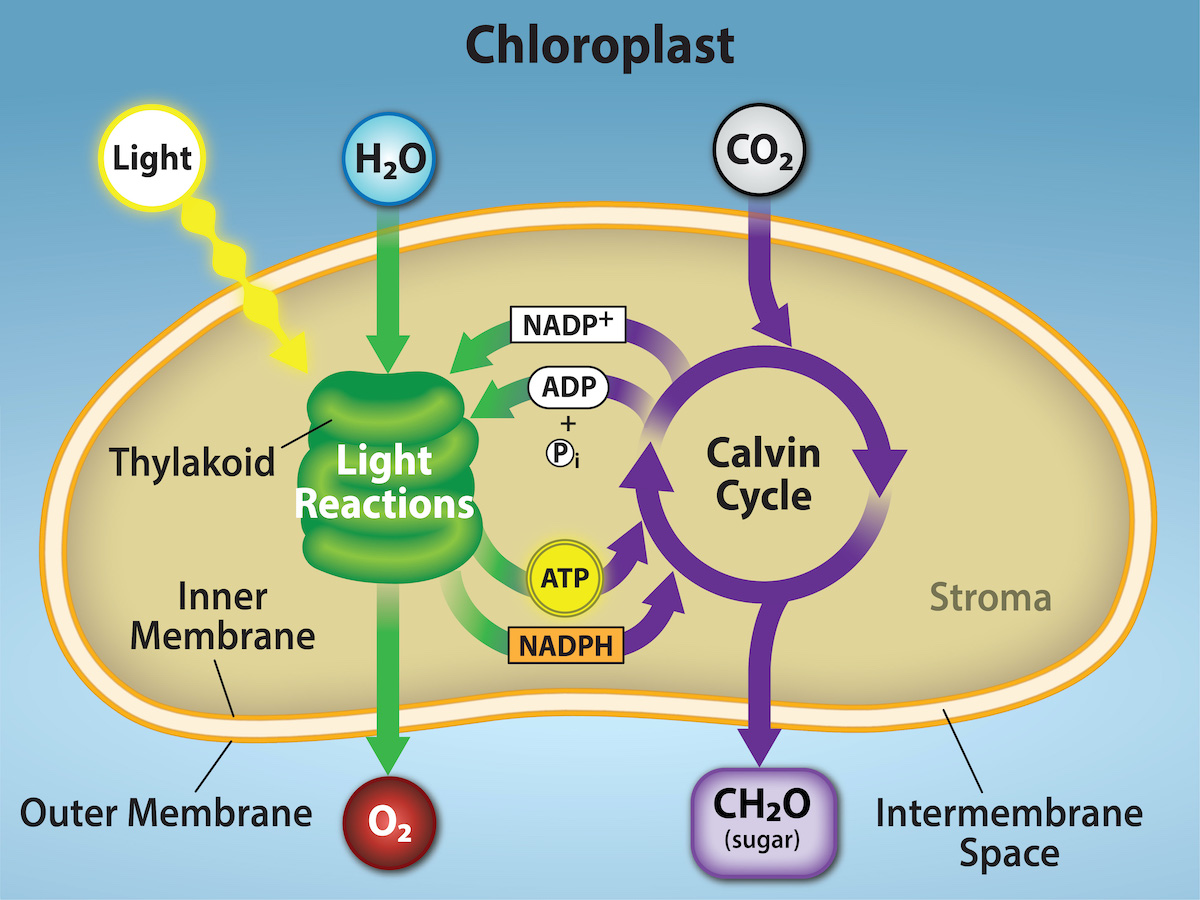
Did I Get It?
The Evolution of Photosynthesis
Ancient cyanobacteria produced oxygen as a byproduct of photosynthesis, changing the composition of the atmosphere over time in the Great Oxygenation Event. Recall that these cyanobacteria also led to the evolution of chloroplasts when they started living inside other cells through a process called endosymbiosis. The cyanobacteria provided the larger cell with sugars from photosynthesis, and the larger cell gave protection and nutrients.
Watch the animation below that highlights how the ancestors of cyanobacteria, and the evolution of photosynthesis changed the world– creating the conditions on the planet that could support complex life.
The evolution of photosynthesis was crucially important to the biosphere for the following reasons:
- Photosynthesis generates oxygen, which is important for two reasons. Photosynthetic organisms created the molecular oxygen in Earth’s atmosphere; without photosynthesis there would be no oxygen to support aerobic cellular respiration needed by complex, multicellular life. Photosynthetic bacteria were likely the first organisms to perform photosynthesis billions of years ago. Thanks to their activity, and a diversity of present-day photosynthesizing organisms, Earth’s atmosphere is currently about 21% oxygen. Also, this oxygen is vital for the creation of the ozone layer, which protects life from harmful ultraviolet radiation emitted by the sun. Ozone (O3) is created from the breakdown and reassembly of O2.
- Photosynthesis provides energy for nearly all ecosystems. By transforming light energy into chemical energy, photosynthesis provides the energy used by organisms, whether those organisms are plants, grasshoppers, wolves, or fungi. The only exceptions are found in very rare and isolated ecosystems, such as near deep-sea hydrothermal vents where organisms harness energy that originally came from minerals and other chemicals rather than the sun.
- Photosynthesis provides the carbon needed for organic molecules. Organisms are primarily made of two things: water and organic, carbon-based molecules. Through the process of carbon fixation, photosynthesis takes carbon from CO2 and converts it into sugars. Carbon in these sugars can be repurposed to create the other types of organic molecules that organisms need, such as lipids, proteins, and nucleic acids. For example, the carbon used to make your DNA was once CO2 absorbed by photosynthetic organisms.
The process of photosynthesis transformed life on Earth. By harnessing energy from the sun, photosynthesis evolved to allow living things access to enormous amounts of energy, and because of photosynthesis, living things gained access to sufficient energy that allowed them to build new structures and achieve the biodiversity evident today.
Only certain organisms, called photoautotrophs, can perform photosynthesis; they require the presence of chlorophyll, a specialized pigment that absorbs certain portions of the visible spectrum and can capture energy from sunlight. Photosynthesis uses carbon dioxide and water to assemble carbohydrate molecules and release oxygen as a waste product into the atmosphere. Eukaryotic autotrophs, such as plants and algae, have organelles called chloroplasts in which photosynthesis takes place and starch accumulates. In prokaryotes, such as cyanobacteria, the process is less localized and occurs within folded membranes, extensions of the plasma membrane, and in the cytoplasm.
Photosynthetic prokaryotes called cyanobacteria led to the evolution of chloroplasts when they started living inside other cells, in a process known as endosymbiosis.
CC Licensed Content, Shared Previously, Included in How Organisms Get Energy
- Biology 2e. Authors: Mary Ann Clark, Matthew Douglas and Jung Choi. Provided by: OpenStax CNX. Located at: Biology 2e. License: CC BY: Attribution 4.0.
- Biology for Majors II. Authors: Shelly Carter and Monisha Scott. Provided by: Lumen Learning. Located at: Biology for Majors II | Simple Book Production. License: CC BY: Attribution 4.0.
- Overview of Photosynthesis – Biology Part I. Authors: Jung Choi, Mary Ann Clark and Matthew Douglas. Provided by: Pressbooks. Located at: Overview of Photosynthesis – Biology Part I License: CC BY: Attribution 4.0
- Energy Enters Ecosystems Through Photosynthesis – Environmental Biology. Author: Matthew R. Fisher. Provided by: Pressbooks. Located at: Environmental Biology – Simple Book Publishing. License: CC BY: Attribution 4.0

